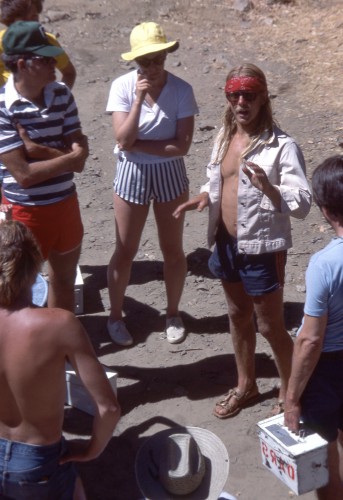 As a commercial river guide, if you demonstrate any real aptitude at one point or another you will be assigned to be Trip Leader. Just like it sounds, that’s where the buck stops, and a lot of responsibility comes with it.
As a commercial river guide, if you demonstrate any real aptitude at one point or another you will be assigned to be Trip Leader. Just like it sounds, that’s where the buck stops, and a lot of responsibility comes with it.
Your first and foremost responsibility is for the safety of everyone on the trip. You are of course focused mainly on the passengers, as they mostly have no idea what they have signed up for. You can expect that the guides do, but they bear watching too. You can just take my word on that.
Once safety has been assured as well as one can in the wild, the next focus of your attention is on fun. Thankfully, fun is pretty hard to deny on just about any river trip. And I’ve been on a river trip when it has snowed, and I still had an awesome time.
If you do things right, then learning is a big part of any river trip — and it often comes disguised as fun. For most people, there is so much to be learned on a river trip. There may be new trees and plants and wildlife that can be pointed out and named. The local geology is likely not something visitors are knowledgeable about. Even the river itself, and what makes currents, eddies, waves and holes.
For me leading trips came quickly in my career as a guide. First I led trips on the Stanislaus and American rivers in the foothills of the Sierra Nevada in California. Then, within a little over a year, I was the trip leader of an 18-day Grand Canyon private (not with a commercial company) trip. This was because I was the most experienced guide on the trip, and had even been down the Colorado through the Grand Canyon the year before — my inaugural year of becoming a commercial guide — on a 30-day trip (these are no longer permitted). You might say I learned quickly what it meant to be a trip leader in the wilderness.
Without the solid background of training with a commercial river company, I don’t know what I would have done. But as it was, that provided the essential foundation from which I could build the necessary knowledge to run a Grand Canyon trip safely. Also, I had my one previous trip in “The Canyon” from which to draw. This turned out to be essential, as that was when I learned about the “tides” of the Colorado River.
The Colorado River exits the bottom of Glen Canyon Dam just upstream from where you put-in the boats to run the Colorado River through the Grand Canyon. Since the flow of the river is completely controlled by the dam, they release enough water for recreational purposes during the day and then dial the flow way back at night. On the river this means you could have a vertical displacement change in the river of something like 2-4 vertical feet depending on a variety of factors. The practical effect of this is if you tie your boat up to shore at night, it might be beached 30 feet away from the river in the morning. If you have ever had to drag a raft this far you will know what a drag (sorry!) this can be.
So part of a trip leader’s responsibility on The Canyon was to tie the boats properly — which often meant with plenty of slack in the line and a secondary line through the stern of every boat. And then, the last thing you did before falling into bed was to check on the boats. If any were beginning to beach, you pushed them out into the water. You also checked to make sure the lines were good. Only then could you rest. And if you were drunk, it just meant you had to be really careful, but you still had to do it.
The parallel with libraries is probably obvious. If you’ve ever had a position with “where the buck stops” responsibility, you never forget what that means. And whether you always hold a position like that or not, you can’t unlearn it. Whether it is likely your responsibility or not, you won’t be able to help yourself. You will be out there at night, with the water lapping on shore, checking the boats with a flashlight. Because you know it needs to be done and you know you’re good for it.
Photo: Frequent OARS trip leader Scotty Stevens giving his passengers a safety talk on the Stanislaus River, late 1970s. Photo by Roy Tennant, courtesy of the Stanislaus River Digital Archive.

